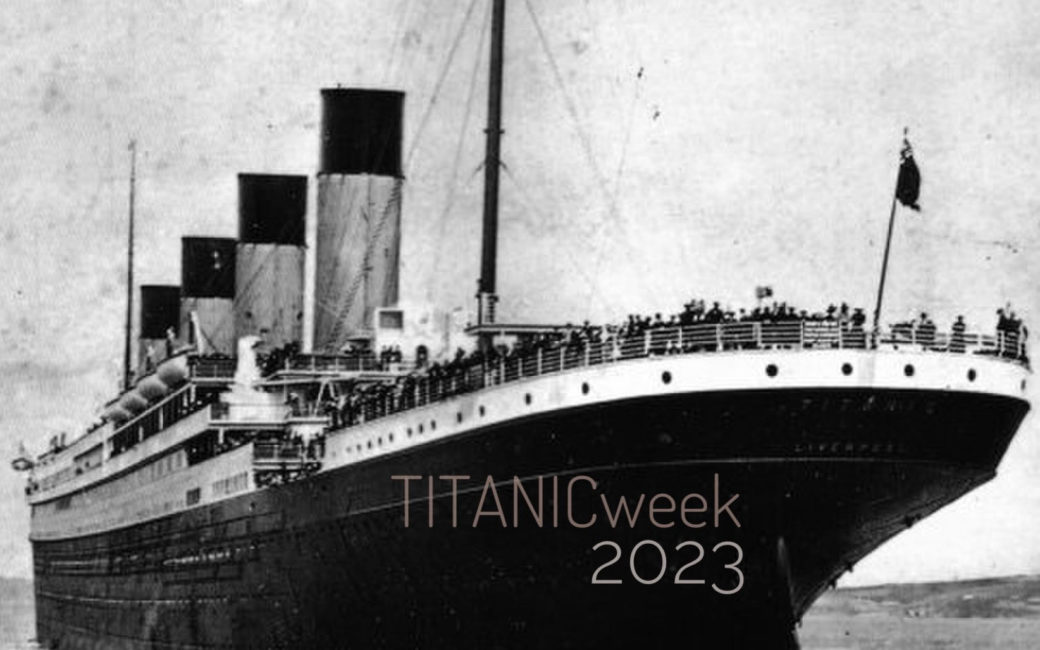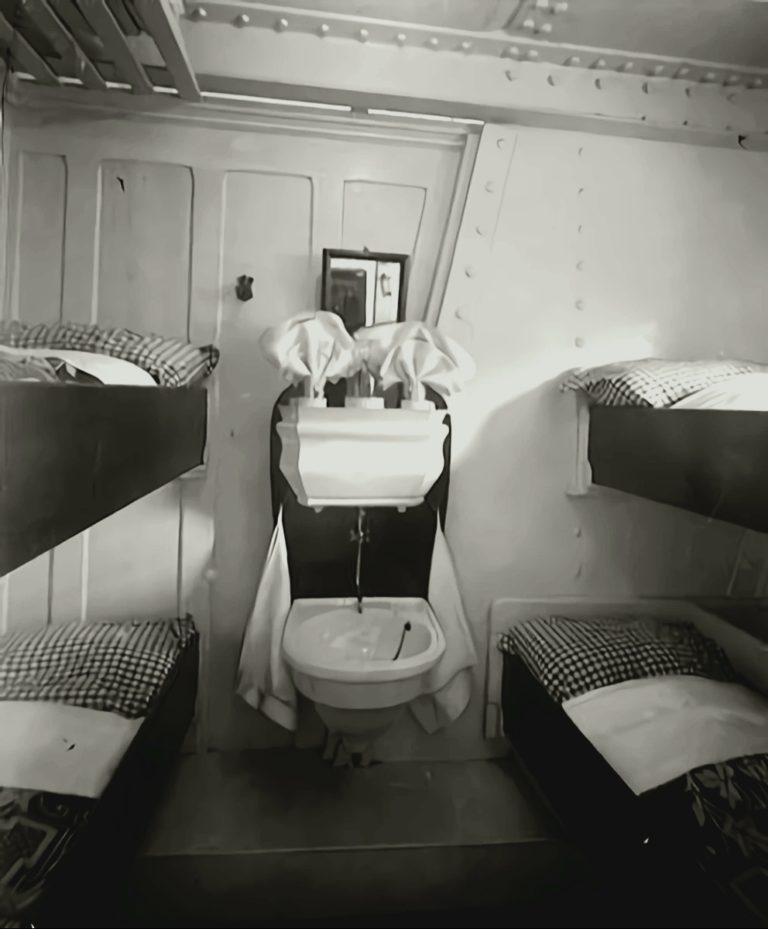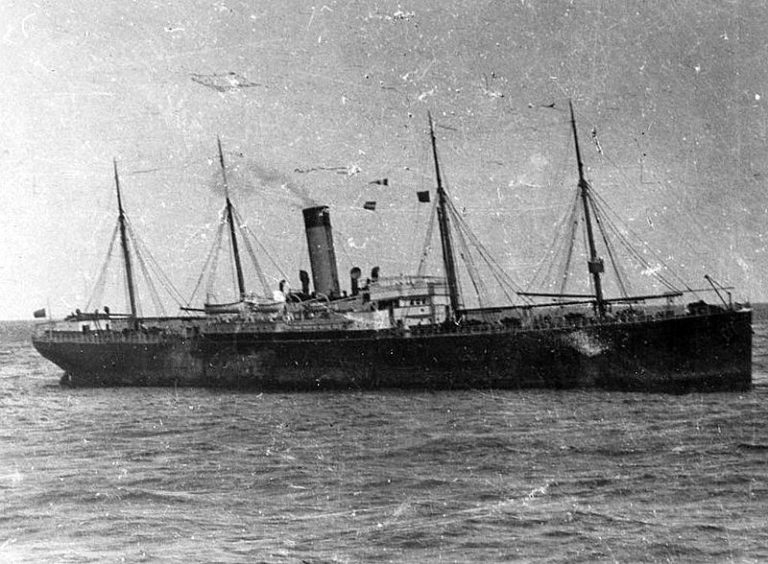"The Click of the Familiar Machinery Comes As a Welcome Interruption": Titanic's Print Shop
The RMS Titanic, much like many other ocean liners, had a print shop.
No photos of it are known to exist.
But it was surely a small space packed with machinery and typeface. An article published in the "Printers' Register" in 1905 describes the typical liner's print shop in delightful detail.
How many of all the thousands who have crossed on the great liners have ever been inside the ship's printing-office? It is a picturesque little shop, fitted up much the same as any printing-office on land, with type-cases and printing-press, where the click of the familiar machinery comes as a welcome interruption to the incessant throbbing of the ship's engines...
The ships' printing-office is usually an inside room and of the size of an ordinary stateroom, with the berths removed. The cases and frames of type in these days of oceans newspapers pretty well fill the little office.
When considering the substantial variety of ephemera that a ship would use, the presence of a printing office was certainly a necessity.
Among the paper goods printed on board an ocean liner were a variety of menus every day, multiple times per day, for hundreds of travelers in each of the passenger classes.
Additionally, the printing office producsd pamphlets on-board programs and special events, stationary, and even waiters' notepads. On Titanic and her older sister Olympic, there would have also been a need for printed tickets to exclusive, paid-access areas such as the Turkish baths.

A contemporary illustration of the "Cool Room" of the Turkish Baths on RMS Olympic, which would have been identical to that on Titanic.
While it might be assumed that all of these materials could have been entirely prepared in advance of a voyage, it would have been detrimental to do so because they were so often subject to change, particularly at sea.
For instance, a course boasted on a pre-printed menu could be ruined when ingredients were unavailable because of anything from spoilage to a delayed supply train and poor weather. This was all the more true for a vessel that had never sailed before; bills of fare may very well have been extemporaneous, or otherwise edited last-minute at a whim.
According to Bob Richardson of the British Printing Society, any color printing would have been completed on shore and otherwise left blank for the printing office on board, who would fill in the text of the item in black ink. The typefaces selected by White Star were commonly used in 1912 and limited in ornament, such as the British "Westminster" typeface by Stephenson Blake, as well as "Grot," more commonly known as "Gothic." The fanciest typeface was arguably Theodore De Vinne's design for passenger stationary, which read "On board R.M.S. Titanic."
Thus, there was plenty to keep a liner's printing office in constant operation. And then, with the advent of the wireless telegraph, passengers vessels would adopt yet another paper item: the newspaper.
In the past year [of 1905] the ship's printing-office has gained a new interest. It has become a newspaper office as well... The installation of the wireless system has given a new occupation to the printer. On many of the great ocean liners, for instance, a newspaper is published every day... It is common for a steamer to be in communication with some other boat each day, and so the possibilities of picking up news from one side of the Atlantic or the other are many. The steward editor is seldom at a loss for some news items from the outside world, at worst not more than three days old...
The newspaper is... about 8 by 4 inches [in size].
Titanic likewise produced its own so-called newspaper, called the "Atlantic Daily Bulletin."
Interestingly, though, it would seem that Titanic did not handle the Bulletin in the usual way as described above. Veteran deep-ocean explorer and Titanic enthusiast Parks Stephenson has indicated that the Atlantic Daily Bulletin would not have fallen under the purview of the printing office, unlike documented procedure on some of Titanic's peer vessels.
According to Stephenson, Senior Marconi Operator Jack Phillips was responsible for writing down the day's news broadcast during his First Watch. He thereafter transmitted the daily update to the Purser's Office, where it was copied with a typewriter and pinned up in the First-Class Smoking Lounge, a facility exclusively available to men.

The First-Class Smoking Room on Titanic's elder sister, Olympic. Taken by William Rau for Harland & Wolff, 1911. Courtesy of the Library of Congress.
The exact model of Titanic's printing machinery has not been discovered to date.
Additionally, the location of Titanic's printing office is still debated. There are alternating reports that it existed on either D Deck or E Deck dependent upon the iteration of the ship's deck plans. It is most commonly argued that Titanic's printshop would likely have been located on D Deck, because it was adjacent to the First-Class pantry and in the immediate vicinity of the First-Class restaurants; this arrangement would have benefitted the manufacture of menus.
Along with the ongoing bills of fare that the printshop would be tasked with every day, this location would have been ideal because it placed the printers in the proximity of wealthy customers who could commission them for custom work, such as private dining menus, luggage tags, and personalized calling cards.
In fact, a business card that was acquired on Titanic still exists. It belonged Father Frank Browne during his brief time on board, and it had been given to him by the First-Class Gymnasium's athletic instructor Thomas W. McCawley. Given its minimalist appearance, it is likely to have been printed on board. At the top edge of the plain white card, Frank noted, "Card given me by".
Mr. T. W. McCawley
Physical Educator.
THE GYMNASIUM,
R.M.S TITANIC,
WHITE STAR LINE.
© "Father Browne's Titanic Album: A Passenger's Photographs and Personal Memoir," by E.E. O'Donnell SJ, 2011.
Titanic's printing office was tended by 53-year-old Print Steward Abraham Mishellany, a refugee from the modern country of Lebanon. After his family fled the Ottoman regime, he had then emigrated to Egypt before resettling in England, where he married a women named Grace Sarah Holland.
Mishellany was in turn assisted by Ernest Corben of London, who was 27 years old.
Abraham appears to have been a veteran employee who had also worked on the RMS Olympic. He, like many a Print Steward, was considered a special breed of worker.
The press is worked by hand. The ship's printer is a regular steward and, like them, wears the ship's uniform. He must, besides, have some qualifications which a landsman may never learn. He must be a good sailor. It is not enough that he should never be sick when a menu or a Marconi newspaper edition is to be run off; he must be able to work quickly with his office at an angle of perhaps 45 degrees.
The two men were likely occupied with their duties throughout the voyage.
It is presumed that on the night of April 14, 1912, that the two printer stewards were probably working late. Orders for the next day's breakfast menus were most likely given to Mishellany and Corben in the afternoon or early evening.
There is no eyewitness record that accounts for Abraham or Ernest during the sinking.
Neither of the men survived.

A government printing office circa 1905, from the Harris & Ewing Photography Collection. Courtesy of the Library of Congress.
Because so many items were printed exclusively on board, there are very few paper artifacts that survived the sinking of the Titanic, most of which are menus.
A First-Class luncheon menu saved by passenger Abraham Lincoln Solomon sold at auction for $88,000 in 2015.
SOURCE MATERIAL
https://leadfellasblog.home.blog/2019/12/01/the-titanics-printers/
http://titanicletterpress.blogspot.com/2011/02/printers-of-titanic.html
http://titanicletterpress.blogspot.com/2011/02/possible-typefaces-of-titanic.html
https://titanichistoricalsociety.org/the-infamous-titanic-menu/
https://www.encyclopedia-titanica.org/community/threads/printers-room-and-equipment-used.39289/
https://www.encyclopedia-titanica.org/discus/messages/5921/33491.html
https://www.encyclopedia-titanica.org/titanic-victim/abraham-mansoor-mishellany.html
https://www.encyclopedia-titanica.org/titanic-victim/ernest-theodore-corben.html
O'Donnell, E.E. SJ. "Father Browne's Titanic Album: A Passenger's Photographs and Personal Memoir." Messenger Publications, Dublin Ireland. 2011.








































